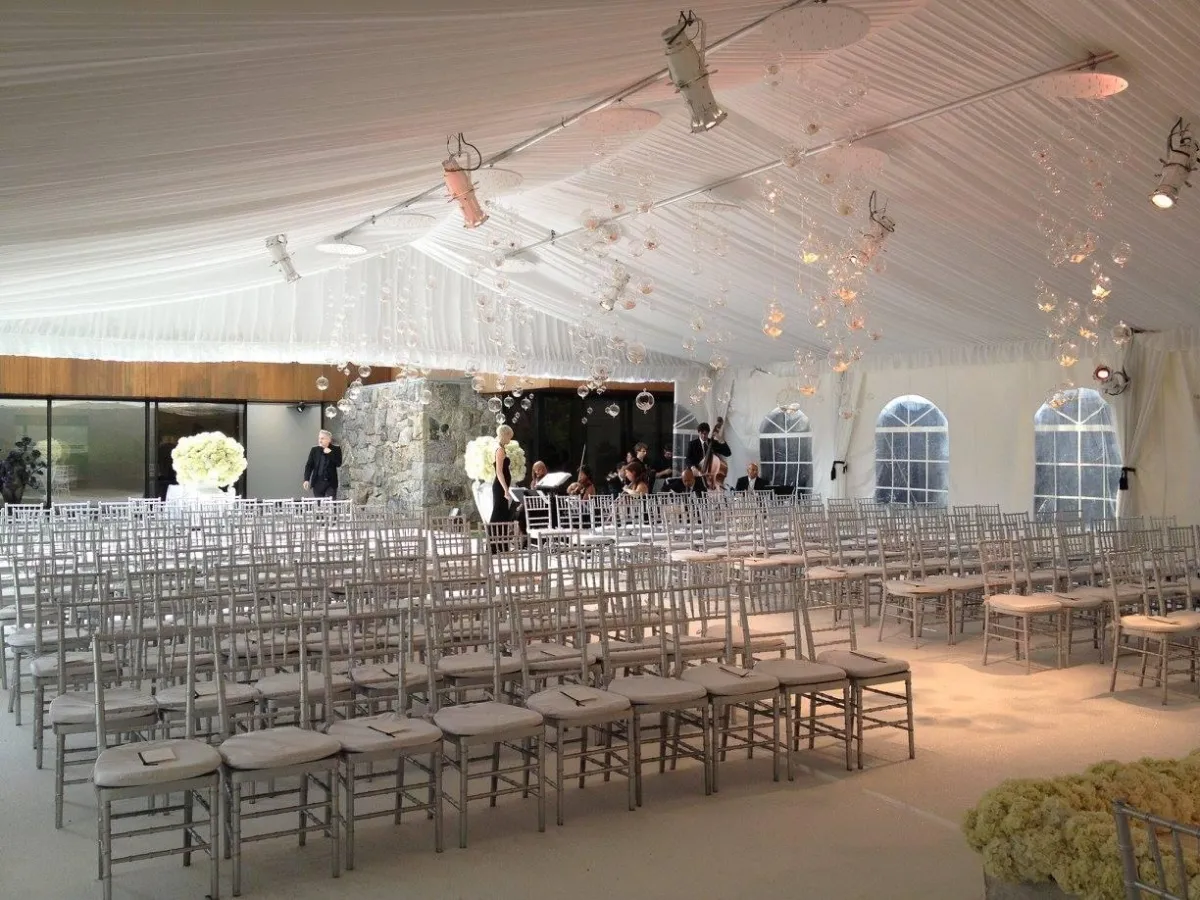
Seasonal Checklist: Winter Tent Events in the Tri-State Area
Hosting a tented event in winter can feel magical — snow falling outside, guests warm inside, lights glowing against a frosty backdrop. But winter tent events require extra preparation to keep guests safe, comfortable, and engaged.
This checklist will guide you through the key considerations for planning a winter tent event in the Tri-State Area, covering heating, flooring, power, and safety so you can focus on creating an unforgettable experience.
Why Winter Tent Planning Is Unique
Cold-weather events are not just summer events with heaters. The season introduces challenges that require strategic planning:
Temperature Control – Keeping a tent warm enough for guests without overheating
Ground Conditions – Dealing with frozen, wet, or muddy surfaces
Weatherproofing – Protecting against snow, sleet, or wind-driven rain
Safety & Code Compliance – Meeting fire code requirements for heating equipment
Guest Comfort – Managing coat storage, entry points, and warm pathways
When addressed early, these considerations can transform your tent from a cold shelter into a cozy, inviting venue.
Winter Tent Event Essentials
Here are the critical components every winter tent event needs:
Heating Solutions
Choose from indirect fired heaters, radiant heaters, or HVAC systems depending on tent size. Make sure to:
Size heaters correctly to maintain comfortable temperatures
Place heaters outside the tent with ducts running in for safety
Distribute heat evenly to avoid cold spots
Insulated Tent Structures
Add sidewalls, liners, and door systems to keep heat inside. Consider double-wall tents or insulated liners for added thermal performance.
Flooring and Substructure
Install flooring to keep guests off frozen or wet ground. Elevated flooring can help with drainage and prevent drafts from entering under tent walls.
Power Planning
Heating systems, lighting, and catering equipment require significant power. Plan generators or power distribution early to avoid overloads.
Entryways and Climate Control
Vestibules or double-door systems minimize heat loss when guests enter and exit. This is especially helpful for high-traffic events.
Snow and Ice Management
Have a plan to clear snow before installation and keep pathways salted or sanded for guest safety.
Step-by-Step Winter Tent Event Checklist
Step 1: Inspect the Venue
Evaluate ground conditions, drainage, and accessibility in cold weather. Check where heaters and generators can be safely placed.
Step 2: Choose the Right Tent and Accessories
Select a tent rated for winter use and add liners, sidewalls, and doors to retain heat.
Step 3: Secure Heating Equipment
Work with professionals to size, position, and install heaters safely in compliance with fire codes.
Step 4: Plan Flooring and Pathways
Install subflooring, ramps, and non-slip surfaces to keep guests safe.
Step 5: Arrange Power Distribution
Calculate total power draw for heaters, lights, sound, and catering. Coordinate generator placement and fuel supply.
Step 6: Schedule Early Installation
Winter installations may take longer due to weather. Allow extra time for setup, testing, and adjustments.
Step 7: Prepare for Guest Comfort
Arrange coat check, warm welcome areas, and clear signage to direct guests.
Step 8: Monitor During the Event
Assign staff or a technician to manage heating, power, and weather conditions throughout the event.
FAQs
Can Tents Be Used in Snow?
Yes, if you use a tent rated for snow loads and keep it properly maintained. Snow must be cleared regularly from the roof to prevent buildup.
How Warm Can a Winter Tent Get?
With proper heating and insulation, tents can stay comfortable even in below-freezing temperatures.
Are Heaters Safe for Tents?
Yes, when installed by professionals using approved equipment. Heaters are typically placed outside the tent with ducts that blow warm air inside.
How Much Extra Time Should I Allow for Setup?
Plan at least one extra day for winter setups. Cold weather can slow installation, and flooring or heating takes additional time.
Will Flooring Really Make a Difference?
Absolutely. Flooring not only keeps guests dry and warm but also stabilizes tables, chairs, and dance floors on frozen or uneven ground.
Local Considerations for the Tri-State Area
Winter weather in New York, New Jersey, and Connecticut can be unpredictable, with temperature swings and sudden snow. Coastal areas may face wind challenges that require additional anchoring. Working with a rental provider experienced in Tri-State winters ensures that your setup meets local codes, stays secure in inclement weather, and keeps guests comfortable.
Conclusion
A successful winter tent event is all about preparation. By planning for heating, insulation, flooring, power, and guest comfort, you can create a warm and inviting space no matter how cold it is outside.
Partner with experienced rental professionals who understand Tri-State weather and permitting requirements to ensure your event is safe, compliant, and unforgettable